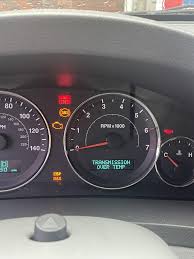What Are the Symptoms of Bad Spark Plugs?
Maintaining your vehicle’s performance is essential, and one key aspect often overlooked is the condition of your spark plugs. Spark plugs are crucial for your engine’s performance, and understanding the symptoms of bad spark plugs can save you from more significant problems down the road. Here are the common symptoms that indicate you might have bad spark plugs.
Engine Misfires and Bad Spark Plugs
One of the most noticeable symptoms of bad spark plugs is engine misfires. When a spark plug fails, it can cause the engine to misfire, leading to a rough and uneven performance. This can result in a jerking or stumbling sensation while driving, especially during acceleration. If left unchecked, engine misfires can cause serious damage to your engine.
Poor Fuel Economy Due to Bad Spark Plugs
If you’ve noticed a significant drop in your vehicle’s fuel efficiency, bad spark plugs could be the cause. Worn or fouled spark plugs can cause incomplete combustion, leading to wasted fuel and reduced mileage. Keeping your spark plugs in good condition is crucial for maintaining optimal fuel economy.
Difficulty Starting Your Car with Bad Spark Plugs
Another common symptom of bad spark plugs is difficulty starting your car. Faulty spark plugs can make it harder for the engine to ignite the air-fuel mixture, especially in cold weather. If your car is struggling to start, it might be time to check your spark plugs.
Rough Idling and Bad Spark Plugs
A rough or shaky idle is a telltale sign of bad spark plugs. If your car feels like it’s vibrating more than usual when idling, this could indicate that one or more spark plugs are not functioning correctly. Smooth idling is essential for a comfortable driving experience, and bad spark plugs can disrupt this.
Poor Acceleration Linked to Bad Spark Plugs
Bad spark plugs can also cause poor acceleration. If you notice that your car is sluggish or slow to respond when you press the accelerator, it could be due to spark plugs that are not firing properly. This can make driving less enjoyable and even hazardous in certain situations.
Check Engine Light and Bad Spark Plugs
A lit check engine light can be caused by various issues, including bad spark plugs. Modern vehicles are equipped with sensors that detect misfires and other engine problems, triggering the check engine light. If your check engine light comes on, it’s essential to have your vehicle inspected, and the spark plugs should be one of the first components checked.
What to Do If You Have Symptoms of Bad Spark Plugs
If you experience any of these symptoms, it’s important to address them promptly. Ignoring the signs of bad spark plugs can lead to more significant engine problems and costly repairs. Here are the steps you can take:
- Inspect the Spark Plugs: If you’re comfortable working on your car, you can inspect the spark plugs yourself. Look for signs of wear, such as carbon buildup, oil deposits, or physical damage.
- Replace the Spark Plugs: Depending on the type of spark plugs and your vehicle’s manufacturer recommendations, you may need to replace them every 20,000 to 100,000 miles.
- Consult a Professional Mechanic: If you’re unsure about the condition of your spark plugs or how to replace them, it’s best to consult a professional mechanic. They can diagnose the issue and ensure that your vehicle is running smoothly.
Conclusion
Bad spark plugs can significantly impact your vehicle’s performance and fuel efficiency. By being aware of the symptoms of bad spark plugs, you can take timely action to maintain your engine’s health and ensure a smooth driving experience. Regular maintenance and prompt replacement of spark plugs are essential for keeping your vehicle in top condition.






